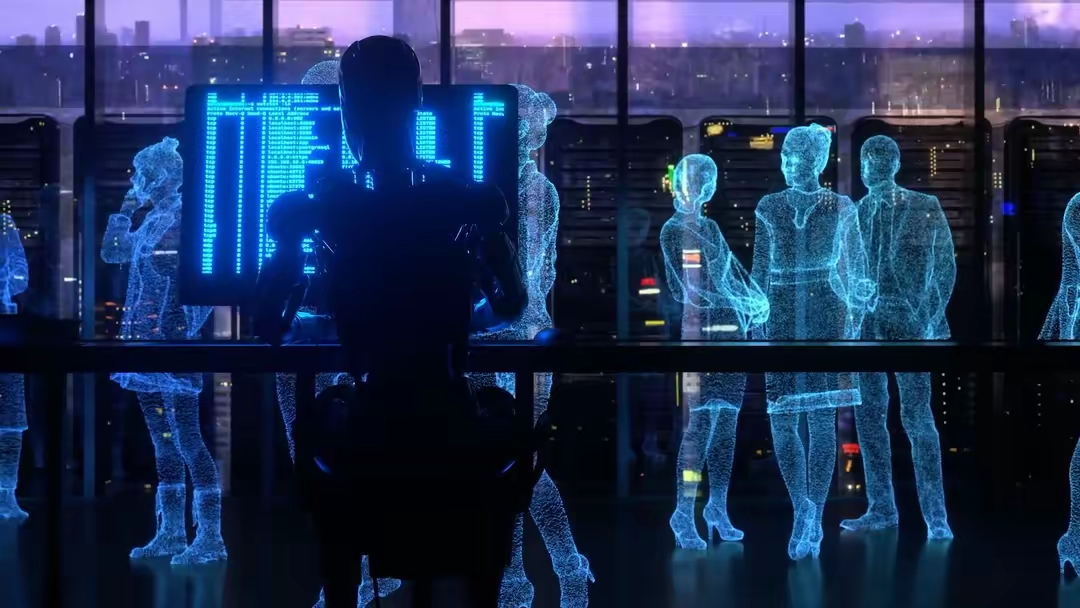
In today's era of rapid technological development, artificial intelligence (AI) is undoubtedly one of the most dazzling stars. It is infiltrating every aspect of our lives at an unprecedented speed, from medical diagnosis to transportation, from financial services to cultural entertainment, and the influence of AI is increasing day by day.
1、The Current Status of AI Development and Its Dependence on Energy
Currently, AI has achieved remarkable success. The breakthrough of deep learning algorithms has enabled machines to demonstrate astonishing abilities in fields such as image recognition, speech recognition, and natural language processing, and can simulate human intelligent behavior to a certain extent. But we must also be aware that the operation of AI requires powerful computing power as support, and behind this is a huge consumption of energy.
The data center is the core location for AI computing, densely populated with a large number of servers that perform data processing and model training day and night. According to statistics, the annual power consumption of a large data center can reach tens of millions or even billions of kilowatt hours, with a significant portion of it being used for AI related computing tasks. For example, training an advanced language model may require several megawatts or even tens of megawatts of electricity, and as the model size continues to expand and training data continues to increase, energy demand shows a linear upward trend.
2、 The prospects and directions of future AI development
Despite facing energy challenges, the future development prospects of AI are still very broad.
In the medical field, AI is expected to achieve more accurate disease diagnosis. By analyzing a large amount of medical imaging data and cases, AI systems can help doctors detect lesions earlier and improve diagnostic accuracy. For example, in early cancer screening, AI can identify tiny signs of tumors and buy valuable treatment time for patients. Moreover, with the development of wearable devices and IoT technology, AI can also monitor the health status of patients in real time, achieving remote medical care and personalized health management.
In the field of industrial production, AI will drive the upgrade of intelligent manufacturing. By implementing intelligent networking and automated control of production equipment, AI can optimize production processes, improve production efficiency, and reduce product defect rates. For example, in some large factories, AI robots have begun to be used for assembly, inspection, and other work on the production line, achieving 24-hour uninterrupted production.
3、 The impact of energy on the future development of AI
Firstly, the stability of energy supply is crucial. If there is a shortage of energy or unstable power supply, the operation of AI data centers will be disrupted, model training may be interrupted, and the performance of AI systems cannot be effectively improved. For example, in some energy stressed areas, data centers have to implement power rationing measures, which limits the normal operation of AI businesses.
Secondly, energy costs will also affect the popularity of AI. At present, the energy consumption related to AI has led to high operating costs, making it difficult for some small and medium-sized enterprises and developing countries to bear such cost pressures. If energy costs cannot be effectively reduced, the widespread application of AI will be hindered, making it difficult to achieve true universal adoption in society.
4、 The mutual promotion of AI development and energy innovation
On the one hand, AI can assist in the development of the energy industry. By analyzing data on energy production, transmission, and consumption, AI can optimize the operation of energy systems. For example, in terms of power grid scheduling, AI can arrange power distribution reasonably based on real-time electricity demand and generation situation, improving the stability and efficiency of the power grid. In the field of renewable energy, AI can predict the power generation of solar and wind energy, helping to better integrate renewable energy into the grid and solve the problems of intermittency and high volatility of renewable energy.
On the other hand, energy innovation will also provide new opportunities for the development of AI. With the continuous advancement of renewable energy technologies, such as the improvement of solar photovoltaic power generation efficiency and the expansion of wind power generation scale, AI will be provided with cleaner and more sustainable energy sources. At the same time, the development of new energy storage technologies, such as high-performance batteries and flow batteries, can solve energy storage problems and enable AI to continue operating even when energy supply is unstable.
In short, the development prospects of AI are broad, but the energy issue cannot be ignored. We should not only pay attention to the constraining role of energy on AI, but also actively explore ways for the two to promote each other, so that AI can truly unleash its enormous potential in the future and create more benefits for humanity.

The European Commission's Autumn 2025 Economic Forecast outlines a complex picture of the current EU economy: it shows moderate growth in the short term, with upwardly revised growth expectations compared to previous projections, but the foundation of the recovery is weak.
The European Commission's Autumn 2025 Economic Forecast out…
Recently, according to Xinhua News Agency, a ministry build…
Recently, the European Commission is about to unveil a seri…
On the just concluded trading day, the three major stock in…
By the end of 2025, the US financial sector is being swept …
In just one month, former Japanese Prime Minister Shigeru I…